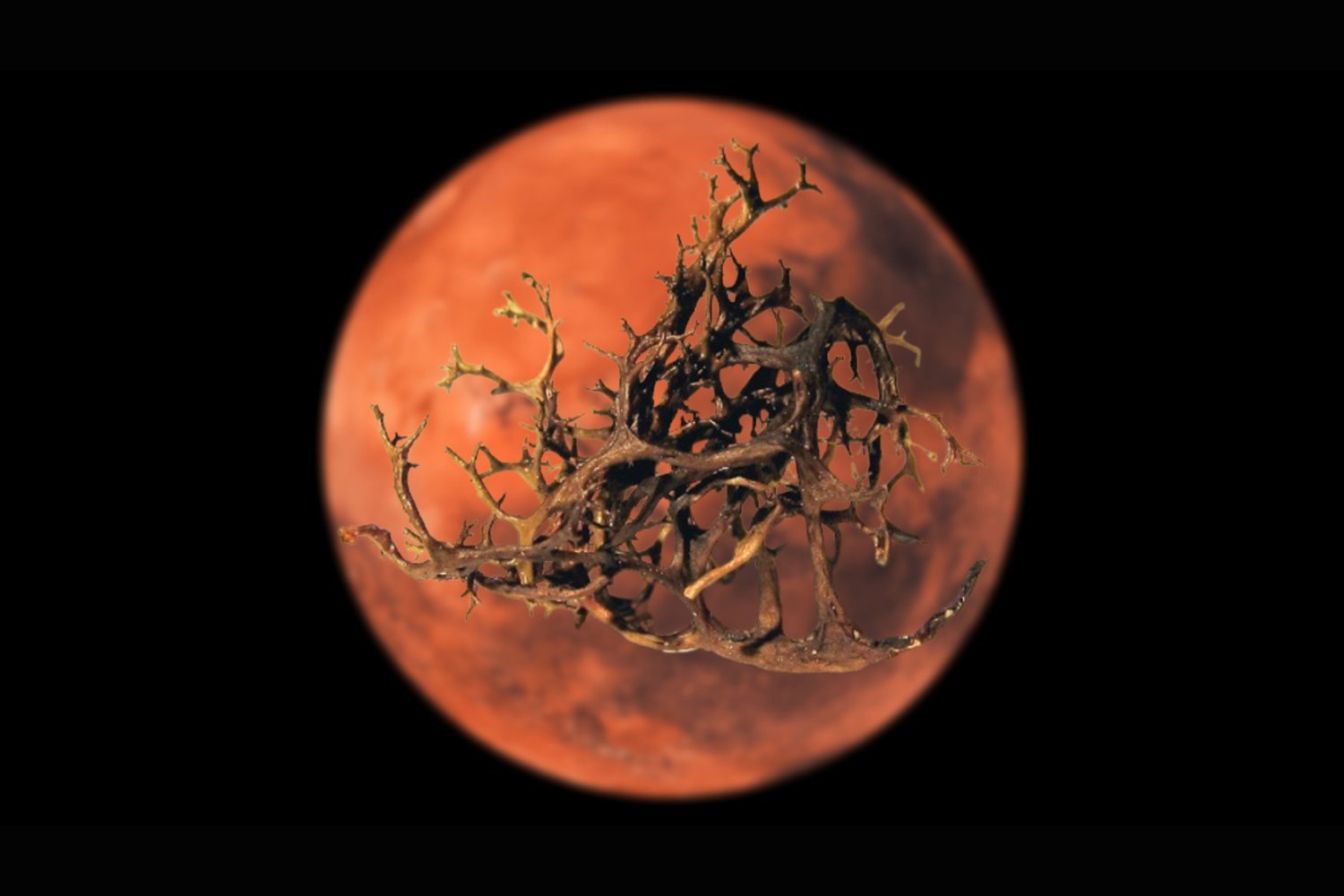Most planetary scientists agree that Mars’ extreme conditions would be uninhabitable to life as we know it. New research, however, suggests that we might be underestimating the hardiness of lichens.
Researchers in Poland have revealed that some lichen species can endure a Mars-like environment while remaining biologically active. As detailed in a study published Monday in the journal IMA Fungus, their work challenges the widely held notion that Mars’ surface is, in its current state, completely incapable of hosting any sort of life.
The researchers tested two lichen species: Diploschistes muscorum and Cetraria aculeata. Lichens are bizarre, alien-looking life forms made up of different organisms: fungi and algae and/or cyanobacteria (a type of photosynthetic bacteria) in a tight biological partnership. They are surprisingly resistant to harsh environments—in fact, lichens thrive in many different kinds of habitats, including freezing tundras and deserts.
The researchers exposed D. muscorum and C. aculeata to Mars-like atmospheric conditions, including simulated air pressure and temperature changes, for five hours. They also simulated the amount of X-ray radiation Mars could experience in a year of intense solar activity. D. muscorum performed significantly better than C. aculeata: its fungus maintained metabolism (the life-sustaining chemical reactions that provide energy) throughout the experiment.
“Our study is the first to demonstrate that the metabolism of the fungal partner in lichen symbiosis remained active while being in an environment resembling the surface of Mars,” Kaja Skubała, lead author of the study and a biologist at Jagiellonian University, said in a Pensoft Publishers statement (Pensoft publishes IMA Fungus). “We found that Diploschistes muscorum was able to carry out metabolic processes and activate defense mechanisms effectively.”
The results indicate that D. muscorum could potentially survive on the surface of Mars. This research challenges the assumption that ionizing radiation (a form of high-energy radiation including X-rays and gamma rays) on the Red Planet is a definitive obstacle to life.
“These findings expand our understanding of biological processes under simulated Martian conditions and reveal how hydrated organisms respond to ionizing radiation – one of the most critical challenges for survival and habitability on Mars,” Skubała explained. Hydrated organisms are organisms whose compositions have sufficient amounts of water to maintain biological functions. “Ultimately, this research deepens our knowledge of lichen adaptation and their potential for colonizing extraterrestrial environments.”
While—as far as I know—NASA isn’t looking to colonize Mars with lichen any time soon, this study opens the door to rethinking what kinds of life could one day survive beyond Earth.



